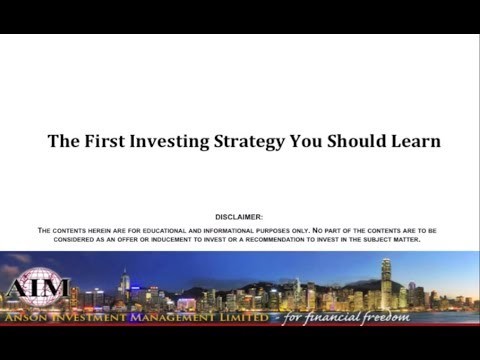The First Investing Strategy You Should Learn
Post on: 16 Май, 2015 No Comment

You don’t have to have a strategy in order to invest. But with the right strategy, you can make investing a whole lot easier — and more profitable.
The problem is that everywhere you turn, you see someone telling you that their strategy is the best one — and in some cases, the only one that will make you successful. With so many different ways to profit from stocks, how do you decide which one is right for you?
Plenty of right answers
Perhaps the most amazing thing about investing in stocks is how many different ways there are to make money. Let’s take a brief look at some of the popular strategies many investors use:
- Large-cap investors seek the stability of established companies with proven track records. Stocks like Wal-Mart ( NYSE: WMT ) and Microsoft ( Nasdaq: MSFT ) have their fastest growth phase behind them now, but shareholders don’t have to worry about them going belly-up anytime soon.
- Value investors look for stocks that trade at attractive prices. Like a Christmas shopper waking up at 4 a.m. on the day after Thanksgiving, value investors hope to snag bargains by buying out-of-favor stocks. While some beaten-down companies never recover, others, such as Fairfax Financial ( NYSE: FFH ). provide stellar returns when they come back.
- Growth investors focus more on companies with strong prospects for the future. Although they prefer not to pay too much, growth investors are willing to pay up for the most promising businesses. Google ( Nasdaq: GOOG ) is a good example, with more than 75% annual earnings growth in the past five years.
- Dividend investors value stocks that pay them back with generous income streams. Dividend-paying stocks like Duke Energy ( NYSE: DUK ). with its 4.8% yield, won’t always show big price jumps. But over time, dividend investors hope to outpace their counterparts.
- Small-cap investors look beyond the security of blue-chip stocks to find undiscovered companies. such as specialty chemical-maker Innophos ( Nasdaq: IPHS ). that have the potential to become the household names of tomorrow. While this strategy is somewhat riskier, small-cap investors expect the profits from their successes to outweigh the losses from failures.
- International investors recognize that great companies exist throughout the world. You might not run into companies like Cemex ( NYSE: CX ) very much on the financial pages, but their relative obscurity can bring greater rewards as well.

You’ll notice that as you read about these strategies, you can almost picture the typical investor who uses them. Stereotypical dividend investors are widows and orphans who count on quarterly dividend checks to pay bills, while international investors might bring to mind a jet-setting globetrotter with a faint British accent.
What’s right for you?
Stereotypes aside, however, your first investing strategy should reflect a mix of your financial goals and personal preferences. Here are some guidelines:
- If you’re nervous about stocks, get your feet wet with a conservative strategy like value or dividend investing. The margin of safety in value stocks and the steady income of dividend stocks both absorb some of the shocks of market downturns.
- The younger you are, the more risk you can afford to take. Those in their 20s, for instance, might want to maximize their potential returns with growth or small-cap investing. As you get closer to needing the money you’re investing, moving to regular large-cap stocks or more conservative strategies makes sense.
- As a first strategy, international investing brings some challenges — foreign accounting systems, different disclosure rules, and even cultural differences that can confuse you if you’re not used to them. If you’re up to the challenge, though — perhaps with the help of international interests or experience — then you’ll have far more choices than other strategies provide.
Last, although many investors identify most closely with a particular strategy, bear in mind that a well-diversified portfolio uses many strategies. Over time, you can learn about all of these strategies, helping you figure out which ones you do best with.
The best investing strategy is the one that will bring you the most success. Start with one that matches your goals, but keep an open mind as you gain experience — you might find another strategy that suits you better.
For more on investing strategies, read about:
- The basics on all the methods stock investors use to make money;
- One Foolish strategy that seeks out dominant companies ; and
- A simple strategy that crushes the market .
The Motley Fool can help you learn more about all of these strategies. Take a complimentary look at any of our newsletters for 30 days to get more in-depth information on how to use the strategies that interest you.
Fool contributor Dan Caplinger uses all of these strategies, but he doesn’t own shares of the companies mentioned in this article. The Fool owns shares of Cemex, which is a Motley Fool Global Gains and Motley Fool Stock Advisor pick. Innophos is a Motley Fool Hidden Gems selection. Duke Energy is a Motley Fool Income Investor pick. Wal-Mart and Microsoft are Motley Fool Inside Value selections. Try any of our Foolish newsletters today, free for 30 days. The Fool’s disclosure policy is a winning strategy.














